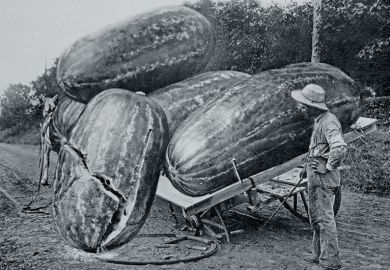A new labelling system for university press releases could help protect research integrity and prevent scientific findings from being exaggerated in news headlines, according to a university leader behind the scheme.
Paul Boyle, vice-chancellor of the University of Leicester, devised the voluntary system, which aims to better communicate the scope of promoted research and what stage it is at in partnership with the Science Media Centre, in response to a recommendation by the UK’s Academy of Medical Sciences.
It follows the results of a survey published by the AMS last year revealing that just 37 per cent of the public said they trusted evidence from medical research – a figure the group said stood as a “stark message” for medical science to repair its public reputation.
A separate study published in the BMJ in 2014 suggested that more than two-thirds of the exaggerations in science and health stories in national news media could be traced back to the university or institute press release.
By tagging press releases sent out to journalists before publication, experts hope that journalists will be better placed to judge the importance of new findings and the prominence that they should be given.
Professor Boyle and the SMC recommend the inclusion of two to three labels at the top of each university press release promoting health and medical sciences.
The first would state whether the research is peer-reviewed, indicating what stage of completion it is at. A second label would show the type of study – whether it was systematic review, randomised controlled trial, observational study, literature review, case study or opinion piece. An optional third label would aim to highlight whether the study was undertaken in humans, animals, human embryos or cells.
Professor Boyle said that, while the labelling system was “not a kite mark” and should not been seen as a judgement of good or bad science, such a system could help to give a “clearer picture of the quality of research”.
“We all know how – particularly in medical literature – one day a glass of wine is a good thing for you, the next day it’s not, and there are many examples of that. With this in mind it’s important to come up with a simple system that will help journalists understand what they’re dealing with when a story comes to them,” he told Times Higher Education.
“This is not to lay any blame,” he said, “as all parties have a role to play in the way we discuss science”. Rather, the move should be seen as a response to discussions taking place about issues of reproducibility, and an encouragement of good practice, he added.
An AMS report published last year, Enhancing the Use of Scientific Evidence to Judge the Potential Benefits and Harms of Medicines, states that press offices, “as key intermediaries between researchers and journalists, have a number of important roles to play” in the spirit of scientific integrity. As such, they should ensure press releases “are balanced, include caveats” and are not exaggerated or distorted from main research conclusions.
The SMC said that the voluntary system had been well received by universities and would be rolled out from July.
Register to continue
Why register?
- Registration is free and only takes a moment
- Once registered, you can read 3 articles a month
- Sign up for our newsletter
Subscribe
Or subscribe for unlimited access to:
- Unlimited access to news, views, insights & reviews
- Digital editions
- Digital access to THE’s university and college rankings analysis
Already registered or a current subscriber?








